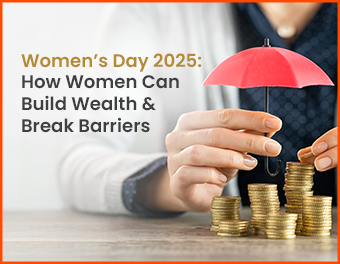Women's Day 2023: The Importance of Embracing Equity

For years, women have been denied basic rights like access to health care due to gender inequality. This is why the theme for International Women's Day 2023 is "DigitALL: Innovation and technology for gender equality". The goal is to understand how the digital divide between genders is contributing to social and economic inequality. This can not only help protect women's rights in digital spaces but also reduce the divide.
It's also important to address gender-based violence that's facilitated by technology. The United Nations chose this theme to align with the upcoming Commission on the Status of Women's priority theme, which focuses on using innovation, education, and technology to empower all women and girls and achieve gender equality.
How can this help?
Including women and marginalised communities in the technology industry can lead to more creative solutions and innovations that address women's needs and promote gender equality. By taking an approach that considers all genders in technology, innovation, and digital education, we can increase awareness of women's rights and encourage more women and girls to participate in civic activities.
Even though technological advancements can help with progress, the digital revolution can also widen the gender gap. This is because women often don’t have access to digital skills and technology, leaving them behind. For example, if women do not have access to the internet or computers, they may not be able to access educational resources online or apply for jobs that require online applications. Or they might not be able to read informative blogs like this one.
That's why it is important to give women accessibility to the digital world to create an equal future. But the road to equality goes through gender equity.
Embrace equity: Why equality is not enough
Even though the terms gender equality and gender equity are often used interchangeably, they have different meanings. Gender equality focuses on ensuring that everyone, regardless of gender, has equal access to opportunities, rights, and fair treatment. On the other hand, gender equity is about fairly distributing resources, opportunities, and benefits between men and women based on their unique needs and circumstances.
This acknowledges that men and women have different roles and responsibilities in society. And also that women have faced disadvantages that need to be considered. It aims to remove the factors that prevent women from accessing the same opportunities as men.
An example would be programs that provide scholarships or grants for girls and young women to study fields that have traditionally been dominated by men, like Science, Technology, Engineering, and Mathematics (STEM). These programs help overcome barriers that prevent women from accessing education in these fields and promote gender equity by providing financial support.
In other words, gender equity goes beyond just treating everyone equally to providing tailored support and resources for men and women to achieve true equality.
Has the situation gotten better at all?
Over the past decade, we've seen progress in addressing gender inequality in various fields like finance, science, politics, and education over the past decade. Although there's still a long way to go, the progress made in the last ten years has been significant.
Finance:
In finance, more women have been given executive roles in the industry over the past decade. In 2010, only 8% of executive roles were held by women, compared to 14% in 2021. The gender pay gap in finance has also decreased, albeit slightly. Where a woman earned 77 cents per dollar a man earned in 2010 (US), they now earn 82 cents.
Science:
In science, there are now more women holding leadership roles, and more women are earning degrees in science and engineering. The percentage of women researchers has increased from 13.9 in 2015 to 18.7 in 2018. The percentage of women earning bachelor's degrees in these fields also increased by 58% from 2012 to 2017.
Politics:
There has also been progress in the number of women holding elected positions in politics. In 2020, women made up 27% of the US Congress, compared to only 17.2% in 2007-2009. The percentage of women serving as heads of state or government globally also increased to 24.9% in 2020.
Education:
In education, more girls are attending and staying in school through adolescence. The global literacy rate for women also increased from 79.8% in 2010 to 83.3% in 2020. The gender gap in literacy rates has definitely reduced.
We've also seen more women in leadership positions across various industries over the past decade. From 2012 to 2020, there was an increase of 8.6% in the proportion of women on boards in India, and in 2020, women held 17% of board positions. Additionally, a higher percentage of female directors (20%) hold multiple board seats compared to male directors (8%).
What about financial literacy?
In the last ten years, more women have started to invest in financial markets. A survey by Motley Fool revealed that in 2018, only 44% of women reported investing (outside of retirement), but that number increased to 67% in 2021. Despite statistics proving that women are better investors than men (the same study reported that women get better returns up to 1%), they don't seem confident in their abilities. A study by Fidelity (2021) reported that even though women feel confident managing day-to-day expenses, only 19% reported feeling confident about making investment choices according to their goals. Therefore, more education and resources are needed to help women gain financial knowledge and confidence in investing.
The future
Women can expect more growth and development opportunities in different industries. Here are some things contributing to making the future inclusive:
-
It’s important that we create a more inclusive environment where women feel safe and included. This requires consistent efforts from everyone.
-
Programs supporting women's education, career advancement, and well-being have helped empower women. They should be invested in so women can reach their fullest potential.
-
Prioritising accessible and inclusive technology and innovation is crucial. This ensures that all women have a chance to benefit from progress and not get left behind.
For all of these to be achieved, it's important to make conscious choices as individuals to make space for women.
Do you have any questions? Write to us











